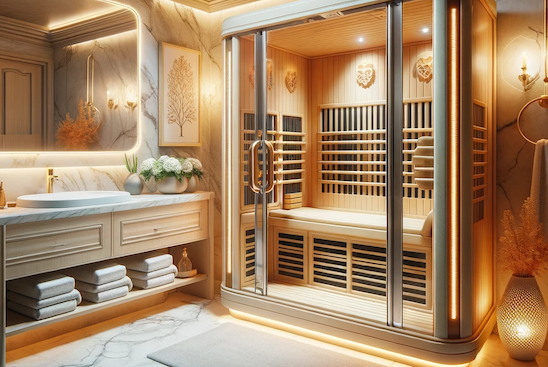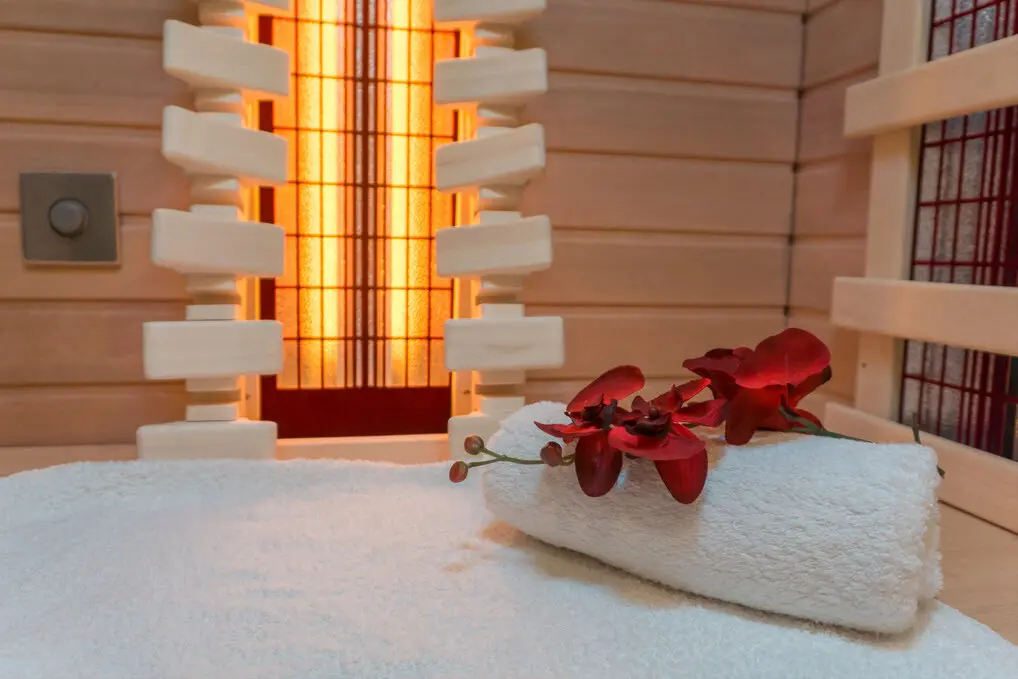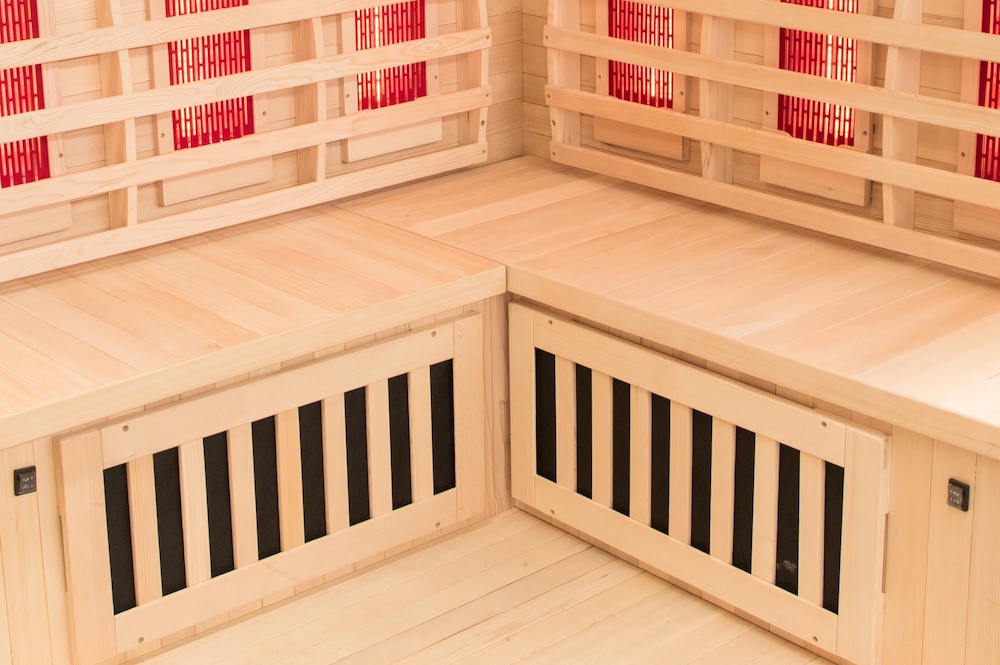- HOME
- Infrared Sauna Insights
- Carbon vs Ceramic Heaters
Carbon vs Ceramic Infrared Sauna Heaters

When you’re thinking about buying or building your own home infrared sauna, one of the biggest decisions you’ll face is the type of infrared heater you choose. Carbon and ceramic heaters are the two most popular options — each with its own unique advantages, from how they heat your body to the health benefits they offer.
Beyond the traditional sauna cabin, newer wellness tools like PEMF infrared mats and sauna blankets are changing the game — combining infrared heat with advanced therapy for even more benefits.
To help you navigate your options, we’ve broken down the 5 essential differences between carbon and ceramic heaters — covering everything from efficiency and cost to health perks and more.
A quick tour of the blog post
- Quick comparison carbon vs ceramic heaters
- Heating efficiency and distribution
- Durability and longevity
- Cost considerations
- Health benefits
- Environmental impact and safety
Quick Comparison - The main features and differences between the two types of heaters
| Feature | Carbon Heaters | Ceramic Heaters |
|---|---|---|
| Heat Distribution | Even, consistent warmth | Less even, but adequate |
| Speed of Heating | Slower to heat, but maintains temperature well | Heats up quickly, reaches higher temperatures |
| Durability | Long-lasting, handles frequent use | Durable, but may not last as long as carbon |
| Cost | More affordable upfront | Higher initial cost |
| Health Benefits | Deep heat penetration, good for circulation and detox | Intense heat, good for muscle and joint pain relief |
| Environmental Impact | Energy efficient, no harmful emissions | Safe, but may use more electricity |
| Compatibility with Infrared Mats/Blankets | Yes – flexible and durable | No – brittle, not suited for flexible devices |

Ceramic heater
Heating Efficiency and Distribution
Picking out a heater for your infrared sauna, is choosing the right comfort level.
With carbon heaters [1], you get this nice, even heat all over the sauna. Much like having a steady, warm blanket wrapped around you.
Ceramic heaters ? They're [2] more of a quick, cozy, and intense hug – they heat up fast and get pretty hot. It's great if you love a strong, toasty feel. They are both are built to last, but they do have their differences in how long they keep going.
Durability and Longevity
Both carbon and ceramic heaters are pretty tough cookies – they're made to stand up to the sauna's steamy environment. Carbon heaters have a bit of an edge in lasting longer, even if you use your sauna a lot. They're a bit pricier, sure, but if you're looking for something that's going to stick around for the long haul, they might be worth the extra cash.
This durability and flexibility really make carbon heaters stand out when it comes to PEMF infrared mats and sauna blankets. Because carbon fibers are bendable, resilient, and can be laid out evenly, they’re a perfect fit for these newer wellness tools. Ceramic just doesn't cut it here – it’s too rigid and breakable.

Carbon heater
Cost Considerations
Alright, let's talk money. If you're watching your budget, carbon heaters usually have a friendlier price tag. Ceramic heaters, though, are like the sturdy trucks of heaters – they keep their heat and are built to last, which kinda justifies their higher cost.
It's not just about what you pay at the start; think about how much it'll cost you down the road with energy bills and upkeep. Finding the right balance between what you can spend and what you get for it is key.
If you’re not quite ready to commit to a full infrared sauna cabin, PEMF mats or blankets offer a cost-effective way to experience infrared therapy. You get many of the same benefits at a fraction of the price — and with added flexibility to use them anywhere in your home.

PEMF infrared mats - check out our latest review
Health Benefits
Health benefits are a big deal when you're sauna shopping. Carbon heaters are kind of like a deep tissue massage – they get right in there and can help with blood flow and getting rid of toxins. Ceramic heaters are more like a hot compress on sore muscles, really good for easing chronic pain, like, for instance, neck pain.
These days, many wellness enthusiasts are turning to sauna blankets — perfect for relaxation, detox, or deep muscle therapy without the full cabin setup. They’re compact, easy to use, and bring many of the same benefits of a traditional sauna into your daily routine.
You might also consider PEMF mats, because they offer an extra layer of therapy alongside the infrared heat. PEMF (Pulsed Electromagnetic Field) gently stimulates your cells to support faster recovery, reduce inflammation, and improve sleep quality — giving you even more wellness benefits in one easy-to-use mat.
This therapy is becoming increasingly popular among people managing chronic pain, arthritis, muscle stiffness, and even stress-related conditions — thanks to its ability to support cellular repair and promote overall wellbeing.
Depending on what you need – whether it's chilling out or pain relief – each type and heater has its own special perks.

Environmental Impact and Safety
Carbon heaters are the more eco-friendly choice. They're energy-efficient, which is good for the planet and your bills. Plus, they don't send out any nasty gases or electromagnetic fields.
PEMF mats and sauna blankets take this a step further. Designed with low EMF emissions and carbon fiber heating, they enhance safety and have a smaller environmental footprint.
The choice between carbon and ceramic heaters, and the choice for the best infrared sauna cabin, depends on what fits your sauna vibe and wellness goals. Hopefully, this chat helps you nail down the perfect pick for your sauna.
So, what if you're looking for something more portable than a full sauna? That’s where PEMF infrared mats and blankets come in – offering many of the same health perks without taking up much space.
The best PEMF infrared mat and sauna blanket options are kitted out with carbon fiber heater systems, as ceramic rods are brittle and you can't twist or bend them.
Additional perks: they warm up quickly, distribute heat evenly, last longer, are durable, have better safety features and allow for extended sessions. Excellent reasons to buy a mat or blanket in the first place!
To deepen your understanding of infrared sauna technology, check out our detailed guide on different types of infrared sauna heaters over at saunace.com. This comprehensive article breaks down how various heaters power your sauna experience, helping you make the most informed choice for your home wellness haven.

Sam Everhart
For more on PEMF and related therapies, visit our blog at saunace.com and explore the articles linked below.
References
1. Michio Inagaki, Carbon Fiber, ScienceDirect, https://www.sciencedirect.com/topics/materials-science/carbon-fiber
2. K. Salonitis, Ceramics, ScienceDirect, https://www.sciencedirect.com/topics/materials-science/ceramics


